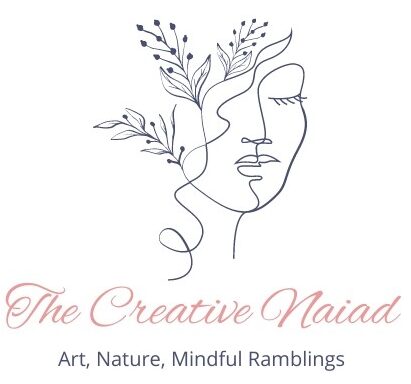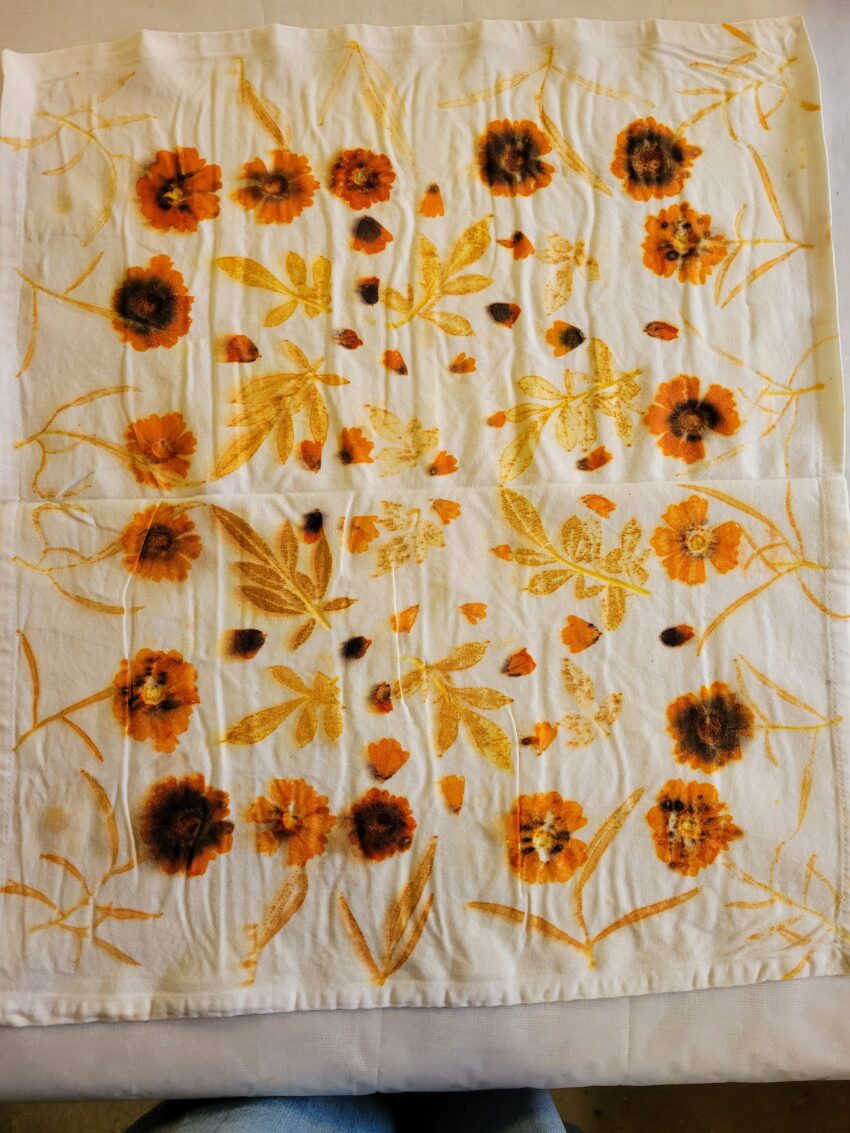Eco dyeing or Eco printing is a process of applying natural color or prints to fabric, paper or leather. Your natural fiber will need to be scoured and treated (with tannin and a mordant salt) to receive the dye before starting the dyeing process. There are several ways to dye your fabric to get the look you want. There is no limit to the possibilities and the further you dive into the world of natural dyes the deeper you realize the pool is.
What is natural color you ask? It is flowers, some bugs (yes bugs), leaves and roots in their natural form or as an extract and minerals. Think tie dye taken to a whole different level. There are synthetic dyes, the type you can buy at art stores like Hobby Lobby or Michaels. They are fun but that is not what I use. Nature dye can be found in your back yard, the vegetables section at the store or in nature. Now not everything prints well, or it will print but fade (fugitive dyes) with a few washings or if placed in sunlight. So, it is important to use more permanent dye materials if it is fabric that will be washed frequently.
One of the easiest dye materials to use with great results is yellow or purple onion skins – the outer dry skin, makes for a great submersion dye bath or print. It is easy to use with fun outcomes. Onion skins were some of my first attempts and now I have several jars of dried onion skins waiting for the next dye pot. The easiest way to start collecting some onion skins is to go to the produce isle at the grocery store and buy one or two onions and then stuff the bag with as many of the loose outer skins in the bin as you dare. 🙂 I have gotten past worrying about what people will think as I stuff my bag, as I am sure it seems quiet odd.
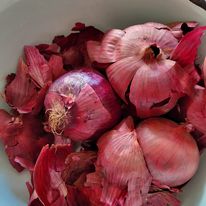
Pillaged onion skins
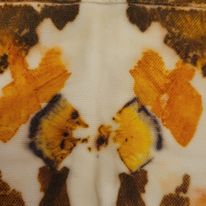
Purple and yellow onion skin print
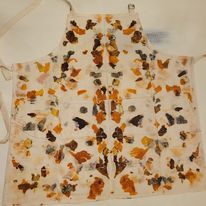
Printed cotton apron with yellow and purple onion skins
Below pictures are the before and after of bundle dyeing with coreopsis from my garden on a linen napkin.
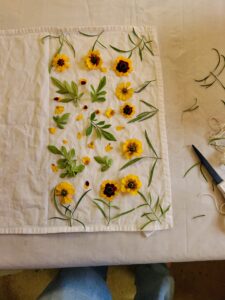
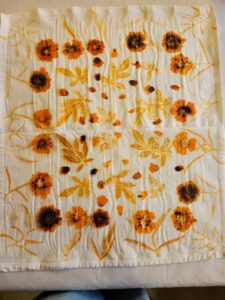
So how did this fascination start with the eco dyeing process? Well let me tell you…..
I came across pictures from artists dying fabric with natural materials and started reading and learning more……and thought……I can do this……and I sprouted another branch in my artistic interests.
I started learning about dyeing fabric a year and a half ago using extracts like Weld, Madder Root and Cochineal. It was during the Winter and no flowers were to be found so the extracts and onion skins were the first to be used,
I had so much fun dyeing material, that when winter turned to spring, I dug out a bunch of sod and planted my own dye and indigo gardens. I started with marigolds, coreopsis (a variety of colors), violets and cosmos. On hikes I would bring home a couple of fern leaves or leaves that dropped on the ground. In the fall in my neck of the woods Goldenrod grows a plenty, so my sister and I went out and nabbed some.
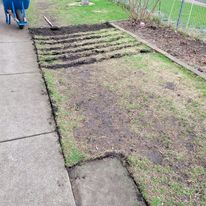
Digging out sod to expand the garden for my dye garden

Dye garden starting to bloom
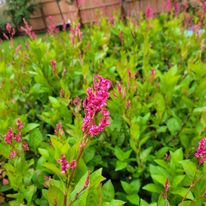
Indigo garden
Please note:
- Research your local area rules before heading out to forage.
- Never pull bark from a living tree as you will risk killing it, only bark from fallen logs.
- Before planting a dye garden due your research and make sure you are not planting a noxious weed for the area you live.
- If plants are considered a noxious weed in your area, you can take more of it.
- In the fall take a walk around the block or a walk the woods and look for freshly fallen leaves.
- Whenever foraging in nature, only take a few samples and only if they are plentiful.
Once you have scoured and applied mordant to the fiber the real magic begins.
There is nothing like unrolling a bundle of fabric to discover the magic of the images or color left behind. Trust me when I say I get downright giddy. You may hear me whispering, “Oh my gosh, this is so pretty!” or “Oops, that was not what I expected to happen.” Those oops’s are the learning curve. So, word to the wise, start out with cellulose based fabric (cotton, linen) as it is not as expensive as protein-based fabric (silk and wool). Each fabric presents its own magic and color uptake. Bottom line is to use natural fibers and not synthetic fibers as they will not take the dye.
I hope this has wet your appetite to learn more about natural dyeing. I will post in the next blog some items you will need before getting started.
